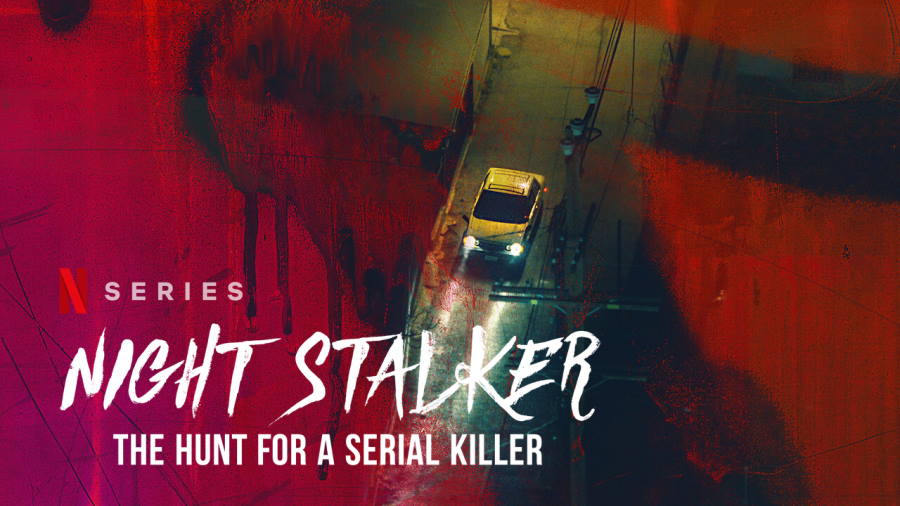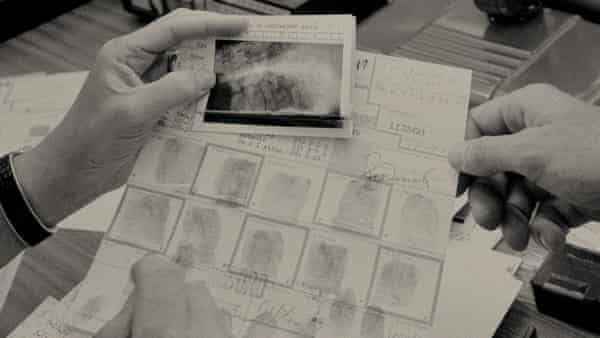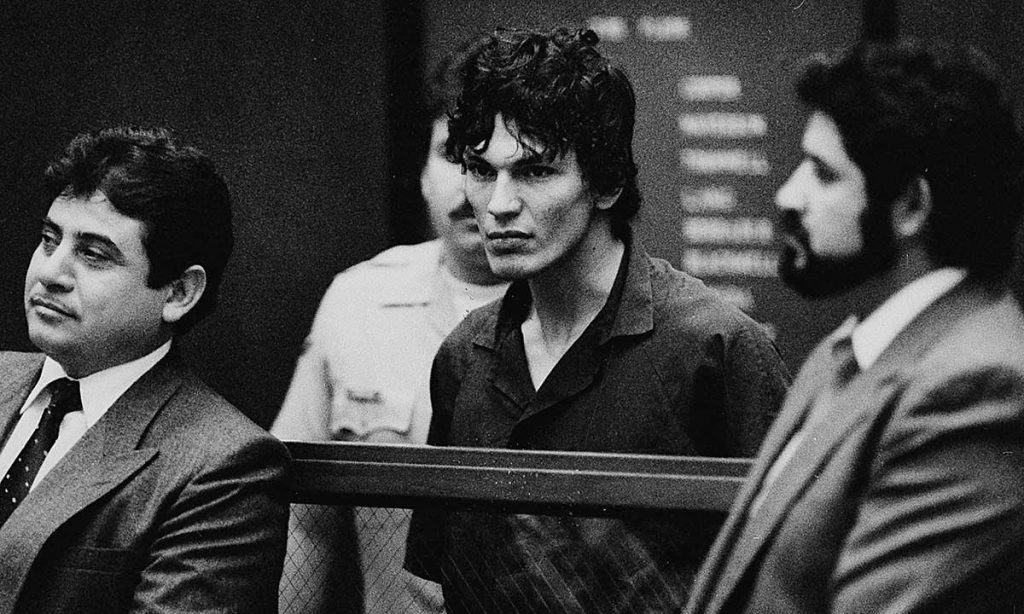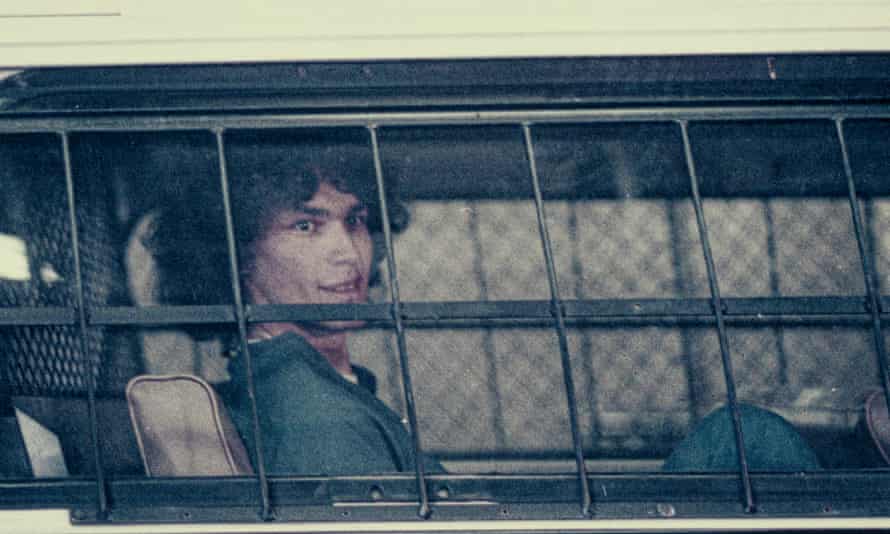
It’s no secret that the true crime genre’s been exploding in popularity lately, and Netflix has racked up their fair share of hits in the genre with shows like Tiger King and the new Unsolved Mysteries. I’ll admit to having a bit of interest on occasion, as I’ve recently been following a podcast based on the career and eventual murder of the Playboy cover girl Dorothy Stratten.
But with a said spike in popularity has come some concern on how much these properties might potentially give someone a pessimistic view on the current crime rate, as well as how much they sensationalize the people who commit these wicked acts. So when I checked out Netflix’s Night Stalker: The Hunt For A Serial Killer, a new documentary mini-series directed by Tiller Russell, what especially stood out was how far in the opposite direction it flees from Tiger King’s approach. Personally, I don’t think the allure of these shows and podcasts lies in people being impressionable so much as they’re fascinated by what’s driving someone to do terrible things. And this particular series implies that part of Richard Ramirez’s motivation was a desire for notoriety (his admiration for the Hillside Strangler and his research of infamous murderers is discussed, indicating he was a “copycat killer”), but at the same time it refuses to dignify the killer’s perspective.

The summer of 1985 was made an extremely difficult one for much of southern California as Ramirez committed random atrocities through San Gabriel and the San Fernando valleys ranging from cold-blooded murder, torture, kidnappings, and sexual assaults. Retired detectives Gil Carrillo, Sgt. Frank Salerno and others recall the details of the hunt for the mysterious criminal, expressing their frustration about various botch-ups such as others carelessly disrupting a crime scene, or how crucial, confidential evidence was leaked to the public at the wrong time.
Gil’s recollections are particularly affecting, mentioning the toll the case took on his family life as his wife feared for his safety, and having a tough time trying to comprehend the Stalker’s lack of humanity. When KNBC reporter Laurel Erickson discusses the courtroom atmosphere, it’s quite chilling.

Whereas the story of Joe Exotic was more of a study into his eccentric personality and often kept track of moments that showed him as a deeply flawed human, Night Stalker doesn’t make any sort of attempt to empathize with its villain’s position There are no goofy videos of someone standing on a truck lip-syncing corny country songs and making failed runs at president here. Instead, it’s a look at a force of pure malevolence- he’s not presented as a man, more as a thing. On occasion, you’ll see a stylistic cutaway to the killer’s weapon of choice with haunting music, but this is off-set by the raw emotion on display as people tell their stories about encountering him.

The series is essentially a slow burn that’s designed to have your emotions bubbling over, which is why I should warn that a lot of the material here includes some unsettling crime photos and conversations that might be triggering for some audiences. It all builds to the fourth and climatic episode (Ramirez is not officially named as the Stalker until the end of the third episode), and as a crack team closes in, you’ll see a jump cut to the original Pac-Man game. At first I snorted and laughed, “Whaat? Ex-CUSE me?”
But it makes sense if you think about it, because while this show does not indulge in its 1980s atmosphere to the degree WW84 did, it fits as an allegory because the community does come off like the iconic ghosts in pursuit of their archnemesis. Not being able to take it anymore, the citizens living in fear feel like equal protagonists alongside the officers on the case, finally rising against the force that terrorized them.

There is something to be said for the “bad boy image”, something that’s been an allure for many figures in history. But it’s one thing to be a groupie for, say, a popular artist/entertainer who uses provocative themes in their work, and it’s another thing altogether to be lusting over a dude who actually hurt others and took lives. And Night Stalker does make mention of the fangirls who wrote love letters and sent photos to Ramirez, but it’s with a sense of derision as a woman who survived an encounter with Ramirez dismisses them as complete idiots.
While this isn’t a major advertised moment, it still feels like the show’s knockout punch- aimed squared at this killer’s rock star mythos. The brief mentions of the factors in the Night Stalker’s young life that led him down his path and his fascination with the satanic (Ramirez was prone to painting pentagrams on the walls of those he attacked) are very matter-of-fact. And it is honestly jarring to see these women fawning over someone who victims and eyewitnesses described as being unkempt, filthy and looking like some sort of goat-creature. It’s quite baffling, and I have only two theories as to why this monster became a heartthrob for some: one, these hoes were so lonely, and two, maybe their curiosity was piqued by seeing him enact a brutal power fantasy. But by placing so much focus on the ordinary folk who had to suffer through the rampage, it makes Ramirez’s aura look a lot smaller and more pathetic.

All in all, Night Stalker makes an interesting stylistic choice in how it covers such a traumatic event, meant to destroy his legend and scorch the earth he walked on. If you’re looking for a longer- super-deep psychological breakdown of Ramirez’s life and mindset you won’t find it here, but I don’t feel that was the goal. Rather, it’s framed as a real-life story of people standing united and rising against a threat. It’s absolutely not for all audiences, certainly not the squeamish (take the kids out of the room before you stream this), but true crime fans should find plenty to sink their teeth into here. If you’ve seen it, as always hit us up on FAN’s social medias and let us know your take on it!
